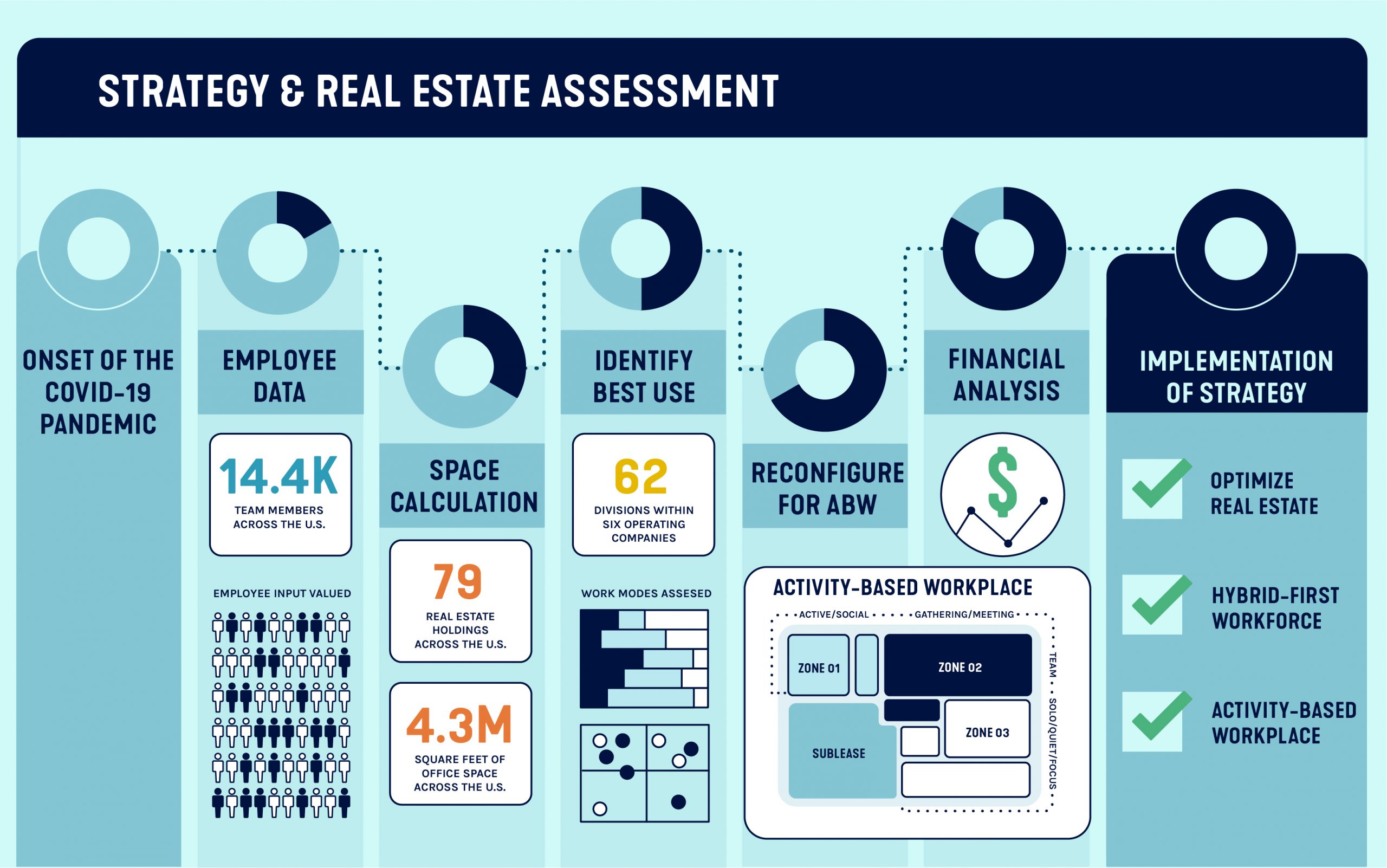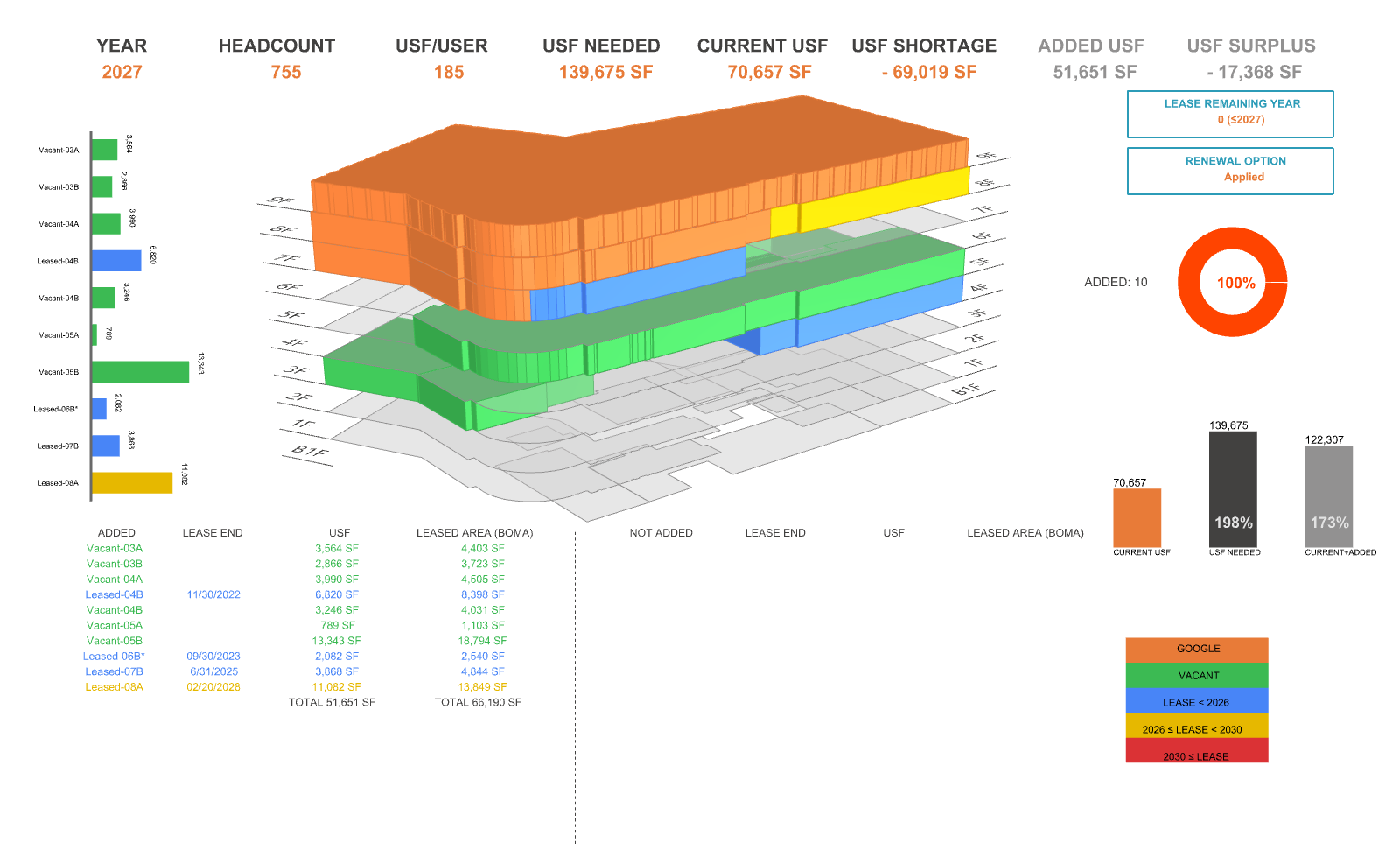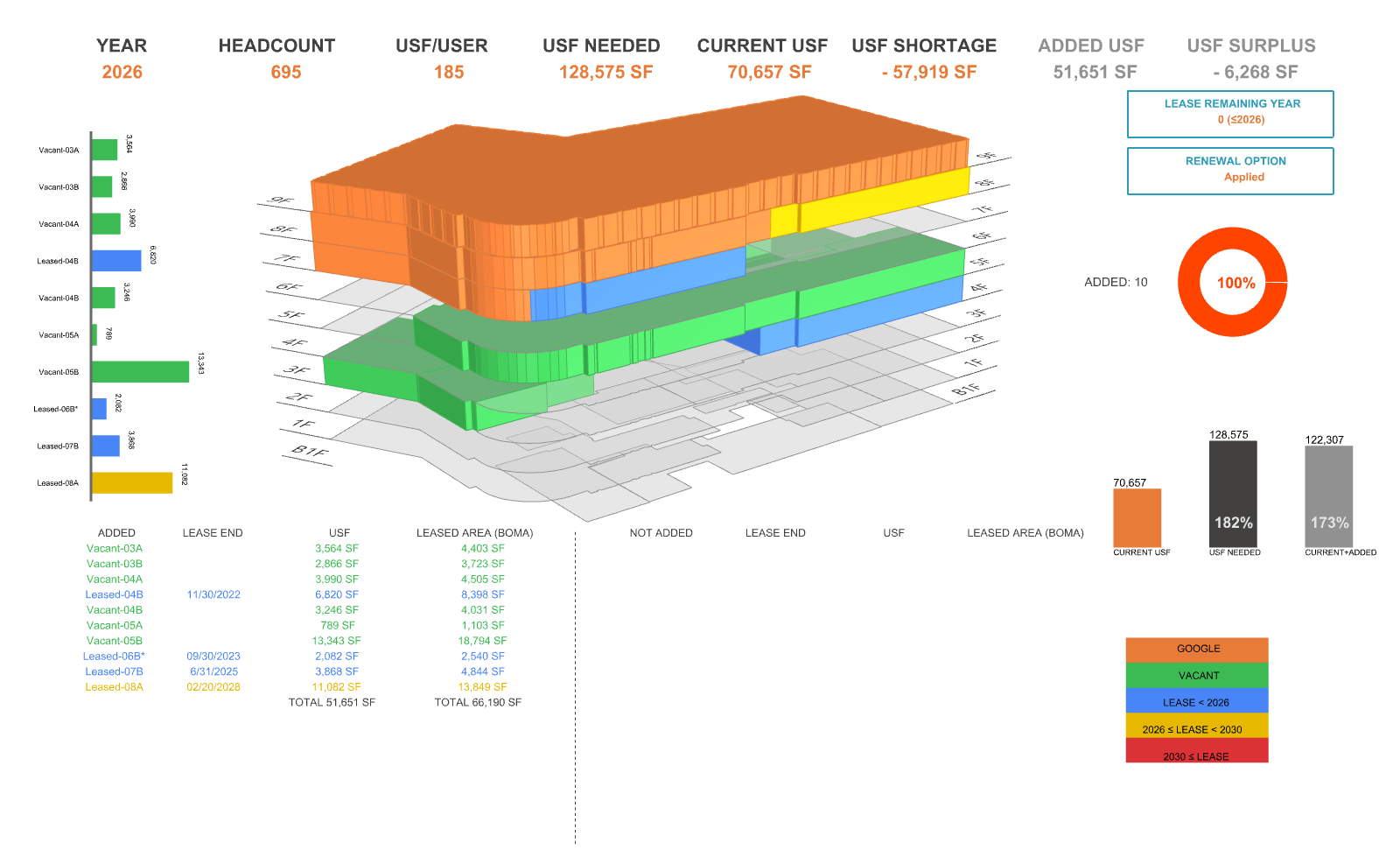Data, Design And A Human-Centric Approach To Optimize Your Evolving Workplace
In an article originally created for Work Design Magazine, workplace design experts Matt Dumich and Alexis Kim explore how data can revolutionize the human-centric workplaces of the future.

The COVID-19 pandemic and the forced shift to remote work has proven that employees can be productive within an array of flexible work environments. The last two years have also given rise to a greater focus on empathy and wellbeing—in personal lives and within the workplace. Pair these realities with the fall-out from the Great Resignation and it’s easy to see that continued struggles to attract and retain top talent will force companies to prioritize employee preferences over traditional business goals and drivers, at least in the near term. Understanding these evolving challenges requires a new, strategic approach to redefining — and subsequently, redesigning — human-centric work environments.
Enter: Data.
Data is revolutionizing more than how we work—it is transforming and enhancing how we solve problems through design through informed decision making, shaping strategies, and measuring outcomes in new and exciting ways. In fact, data-driven computational design tools are fast becoming standard practice, increasingly helping teams and clients better understand complex datapoints—including those pertaining to office and real estate needs. But with so much information available at our fingertips, it can be overwhelming to understand what data is critical. Workplace design and strategy experts skilled at analyzing and separating out pertinent data can help companies overcome a critical hurdle in the rapidly changing world of work. These experts can help decision makers hone in on the “why” behind an organizational or facility-based decision before jumping ahead to the “what” and “how.” This process and sequencing are central to a solid workplace strategy for 2022 and beyond.
Rapid market changes and use patterns have disrupted real estate. What can we learn from this evolution?
The myriad of changes brought about by the pandemic have further complicated how companies determine the right workplace strategy and is leading many to reassess their entire real estate portfolios. Gone are the days when one survey could be deployed to easily arrive at a single strategic solution that solves the broad range of staffing, operational and facility needs. Equally challenging, the rapid rate of change within the world of work makes prior benchmarking no longer viable. Today, leaders must consider how various combinations of remote, in-person and hybrid work models might impact office utilization and space needs. Additional variables must also be considered:
- The methods and locations impacting how and where work gets done have fundamentally changed
- The need to balance organizational objectives with policies and the irrefutable power and demand for talent has become increasingly delicate
- The adoption of hybrid work policies and integration of free-address workplace concepts have further complicated real estate decisions
With these factors in mind, organizations must analyze and weigh quantitative data, qualitative human-factors, and strategic design creativity.
Success starts with a holistic engagement strategy aided by data.
Developing an impactful workplace strategy begins with focusing on the right data and solving for the right “why” from the onset of the effort. Identifying this critical driver will properly inform what type of information is needed, as well as how data should connect to the organization’s operational, facility, and cultural objectives. Determining the overarching driver for a “best-fit” strategy hinges on two additional key components: Aligning the vision of key organizational leaders and engaging appropriate internal partners to clearly define goals and establish guiding principles.
In this new era of work, a one-size-fits-all approach is neither realistic nor equitable and will perpetuate past failures and organizational pitfalls. The stakes relative to how a workplace strategy will influence and impact an organization’s talent retention and recruitment efforts are also much higher. Therefore, it is imperative to ensure the right internal partners, including human resources, are engaged in strategy development discussions and exercises. Such inclusive participation will enrich dialogue regarding people data and also deliver a more holistic alignment to an organization and its culture.
In developing a workplace and real estate strategy for American Family Insurance, partnering with key personnel from the company’s workplace and human resource groups allowed SmithGroup’s strategy team to connect people, work, and office space through data. This diverse group of participants helped all parties involved better understand employees’ perspectives and how incremental changes in the strategy development occurred over time. All stakeholders aligned business needs across company divisions, gaining a clearer understanding of how various work approaches and styles could inform activity-based workplace solutions on a site-by-site basis. Equally important, internal partnerships and thoughtful participation from key staff drove successful modeling of several real estate scenarios that ultimately led to a company-wide strategic solution.

Data collection methodologies and understanding the best means for interpreting data is another critical area where expertise and tools come into play. For this reason, many design firms that specialize in workplace strategy development and implementation have expanded their teams to include data scientists, information analysts and computational design experts that help to enrich their toolkits with digital information dashboards, data visualization techniques, parametric modeling, and more robust platforms and deliverables. Traditional methods of gathering data through surveys, focus groups and interviews still apply, but determining the right level of engagement, range of data points and questions all need to align with the effort’s overall framework.
On a smaller scale, a global tech company needed to master plan a single site in Washington, DC. Stakeholder interviews were conducted to better understand each group’s business needs and how the groups anticipate working in the future. This insight was paired with long-term staffing projections, availability of space, and an analysis of other building tenant’s lease terms. This combination of input and data was adequate to inform a strategic path forward. Had a more complex analysis been required, the team would have expanded their efforts requiring more data sets—but going big isn’t always necessary.


Site-specific Strategy & Real Estate Assessment. Graphic courtesy of SmithGroup.
What approach is right for your company?
Determining the right solution takes an iterative approach to frame the appropriate end goal for each organization. For American Family, the human resources and workplace teams could examine a live data dashboard that visualized disparate real estate data at a macro-level. In this instance, the team needed to drill down to the granular level in which data could be sorted by impact and decisions for a specific location or division. Additionally, an updatable program area calculator with inputs for changing “people data” for this evolving, hybrid-first organization allowed the team to better understand the right mix of space types. This exercise also allowed the client to access implications of the company’s comprehensive leasing strategy.
Regardless of the assessment’s depth and breadth, it is important to remember that a successful workplace strategy is an iterative and evolving process with learning and feedback loops, not a fixed conclusion. Having the mindset to test and adjust, with an emphasis on progress over perfection is critical to the strategy’s success. Equally critical is the recognition that this new era of expanded hybrid work affords organizations the ability to capitalize on and experiment with new opportunities that continue to arise.
Data-driven decision making will continue to guide us as we learn and adapt along this continuum.
The secret to creating a successful workplace approach isn’t just in data or design—it comes from the interplay between the two and the strategy that brings them together. In many ways, data enables us to create more human-centric solutions through human-centric processes. On one hand, data can enable us to better understand human performance outcomes and metrics regarding employee wellbeing in the workplace. With this data, we are more empowered to use that knowledge to inform decisions up front and throughout the strategy development and refinement. On the other hand, gathering data from a human-centric mindset enables us to create newer, richer partnerships that facilitate better, more human-centric design solutions.
Ultimately, creating and building a framework suited to your organization’s needs will better position your company for the future and encourage nimbleness. Understanding your needs in real time while looking towards the next evolution is certainly an advantage in today’s constant state of change.